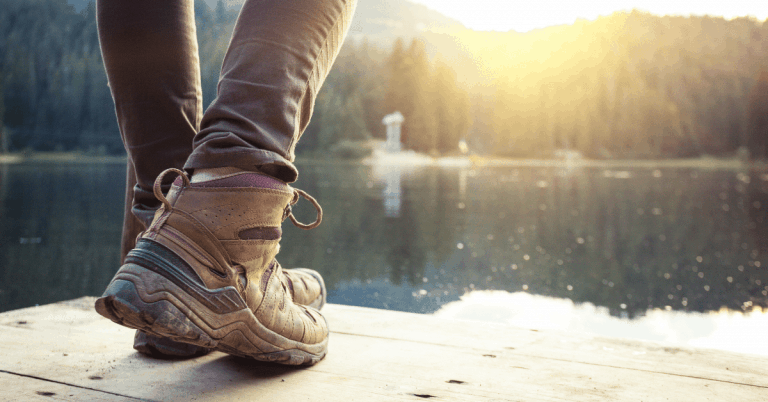Your footwear can make or break your hiking experience.
Yes, it’s important to have a solid pair of hiking boots. That goes without saying. But, you can have a great pair of hiking boots and it won’t do you much good if they aren’t a good fit.
So, how should hiking boots fit?
You’re about to get the lowdown, along with some tips and tricks to make sure they fit properly when you’re trying a new pair on in the store.
We’ll also give you a few pointers on adjusting the fit of your hiking boots once you’ve already got them.
Ready?
Let’s dive right in!
The Quick Answer
To state the obvious – your hiking boots need to be really comfortable.
You’ll be walking around all day long, and you’ll more than likely be carrying a considerable amount of weight on your back. So, your feet have a serious job ahead of them. You want to make it as easy on them as you can.
And, that all starts with finding a pair of hiking boots that fit perfectly.
Hiking boots that fit too tightly will become painful after a while, and could end up injuring your feet or cause knee pain. On the other hand, hiking boots that are too loose of a fit are a sure-fire way to end up with blisters and sores.
You don’t want to suffocate your feet, but you don’t want the boots falling off either. It’s like in Goldilocks. You need to find those baby bear boots that are just right.
You should have a little bit of toe room, but not too much. Walk around and stand on your toes a few times to make sure they don’t hit the front of the boot. If they do, the boots are too small.
Other things to look out for are too much space around the toes or heel, or pinching at the heel. These are all signs that a pair of boots aren’t a good fit for you.
8 Tips For Trying On Hiking Boots
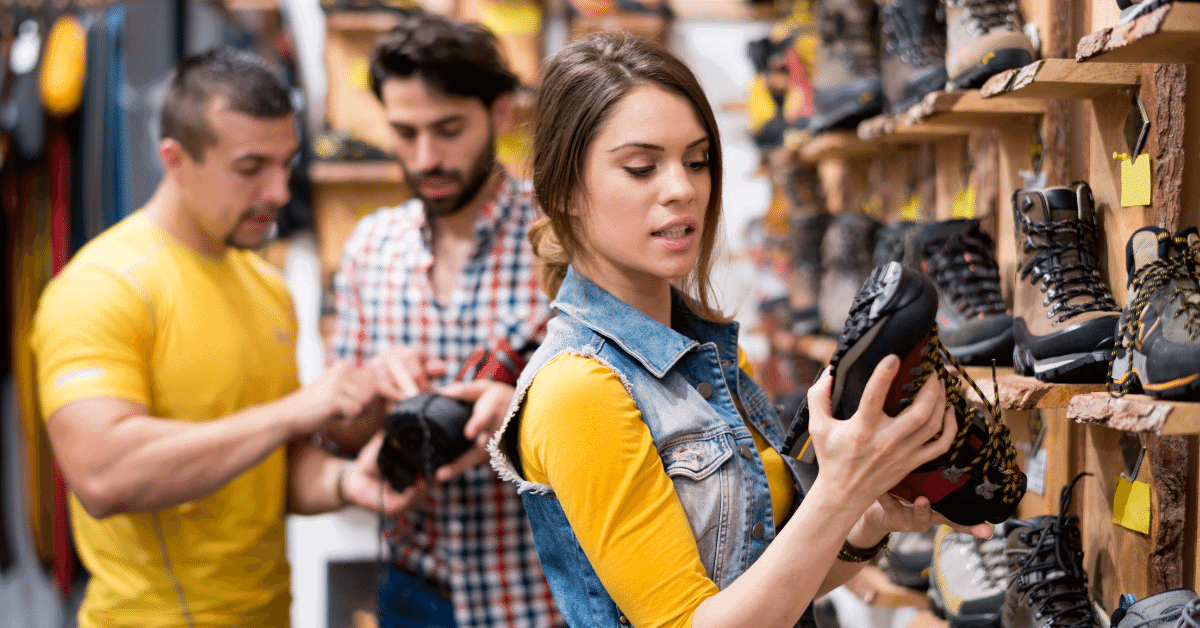
There are a few things you can do when you’re trying a pair of boots on at the store, to make sure they fit properly.
I’ve put together this list of handy tips to keep in mind next time you’re going hiking boot shopping.
Check The Length
The first thing you need to do is make sure the boots are the right length.
Shoe sizes can vary from brand to brand, so the best thing to do if you can is measure your feet in advance. Measure from the end of your heel to the tip of your longest toe.
Here’s a weird fact you might not have known:
One of your feet is probably a bit longer than the other. So, make sure you measure both. When trying your shoes on, you should check the fit on the longer foot first.
There’s a great trick for checking whether the boots you’re trying on are the right length. This is what you need to do:
- Put the shoe on your longer foot, and leave the laces untied.
- Stand on your toe, and slide your foot all the way down to the front.
- At this point, you’ll need someone to assist you. If you do this part yourself, you won’t be able to stay in the right position to get an accurate result.
- While you’re standing upright on your toe, have someone slip their index finger in between your heel and the back of the shoe. If it fits comfortably, then they’re a good length.
- If the finger has too much room to move around, or can barely squeeze in, you should try another size.
Check The Width
OK, so you’ve got the right length. The next thing you want to check is the width.
For this, you’ll need to lace your boots up, just like you would if you were setting off on a hike.
Try and move your foot around from side to side inside the boot. If it can move around a lot, the boots are too wide for your foot and you could end up with blisters.
On the other hand, if you can’t move them at all and the boot is painfully tight, that isn’t good either.
Your foot should be comfortable and snug, with enough room to breathe but not enough room to move around while you’re walking.
Keep in mind that boots will stretch out a little bit once you’ve broken them in. This is especially true for a leather boot. So, if they’re just a little bit on the tight side, they might be just right when they stretch out.
But, if they’re painfully tight, give them a miss.
Check The Heel
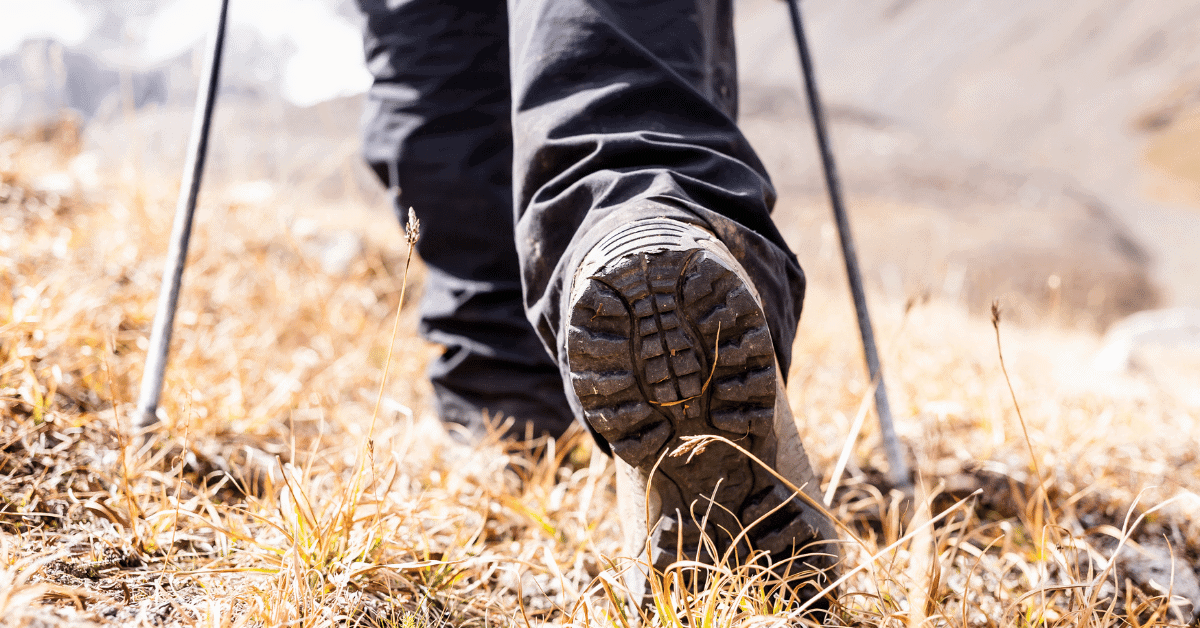
Once you’re satisfied with the length and width of your boots, the last thing you need to check is the heel.
Walk around the store for a while. Stand on your toes. Do a little dance. If there’s an incline somewhere in the store, walk up and down that a few times.
If your heels are sliding up and down inside the boots, and they’re tightly laced, you’re going to have a problem with blisters.
If your heels are only moving a teeny tiny bit, you might be alright. But, ideally you want as little movement of the heel as possible.
Make sure they aren’t too tight either, though. If the boots are pinching your heels, that’ll also make them extremely uncomfortable for walking long distances in.
Wear Socks When Trying Them On
Always bring a pair of socks along with you when you go hiking boot shopping.
The socks you bring should be the same thickness as the socks you wear when you go hiking.
Socks can actually make a considerable difference in how a pair of boots fit. So, if you bring a pair of really thick socks, you might end up with boots that are too big.
If you’re new to hiking, I definitely recommend getting proper hiking socks. Wool or synthetic socks that are quick drying are a much better choice than cotton, which is slow to dry. It might not seem massively important, but the socks you wear can actually do a lot to protect your feet from blisters, so it’s worth getting the right kind.
Wear A Heavy Backpack When Trying Them On
Another thing you should bring along is a fully loaded backpack.
OK, I’m aware that this sounds a little bit ridiculous. If the idea of taking a fully loaded hiking backpack shopping doesn’t thrill you, I completely understand, believe me.
But – if you really want to put a pair of boots to the test, having a heavy load on your back while you walk around in the store in them is a fantastic way to do it.
So, even if it might seem a bit silly, taking a loaded backpack with you is definitely a smart move.
Wear Your Orthotics When Trying Them On
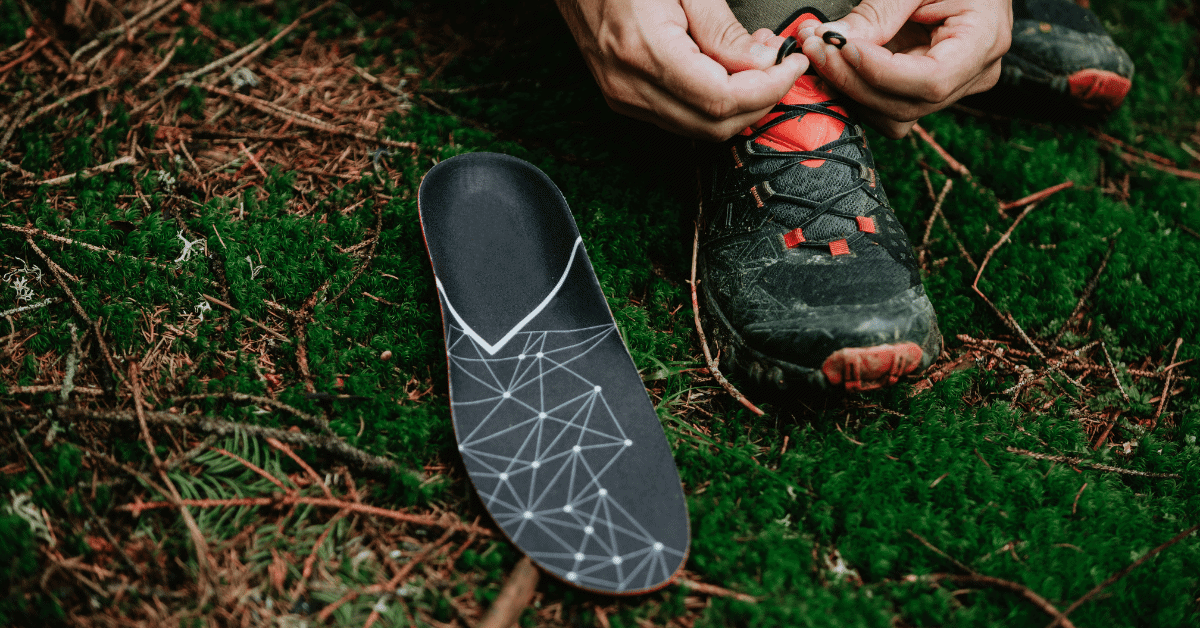
If you wear orthotics, you definitely want to take them along with you and try your boots on with the orthotics in.
A pair of boots will fit differently with and without orthotics. Even if they fit perfectly without the orthotics and you think it’ll be alright, you could be in for a rude awakening when you try them on with the orthotics.
Try Them On Towards The End Of The Day
When you walk long distances, your feet swell up a bit. It might not be much, but it’s enough to make a difference in how tight your footwear feels.
Considering the fact that your feet will definitely be in this state while you’re hiking, it’s a good idea to try hiking footwear on towards the end of the day. Try to pick a fairly active day when you’ve done a good amount of walking.
Consider Going Up A Size*
*This tip only applies to people who will be using their hiking boots for particular purposes.
For instance, if you’re going to be wearing your hiking boots all year round. There’s a good chance the socks you’ll be wearing in the winter will be thicker than the socks you wear in the summer. For that reason, you should go a half or even full size up, to make room for your winter socks.
Again, in this case the best thing to do would be to bring thick winter hiking socks along and try the boots on with those.
In the summer, you can use thicker insoles if the boots fit too loosely when you’re wearing thinner socks.
Also, if you’re going to be long distance trekking, your feet will swell considerably. Getting a half or full size up is a good idea for long distance hikers. After days of hiking, they’ll fit perfectly.
4 Tips For A Comfier Fit Once You’ve Bought Them
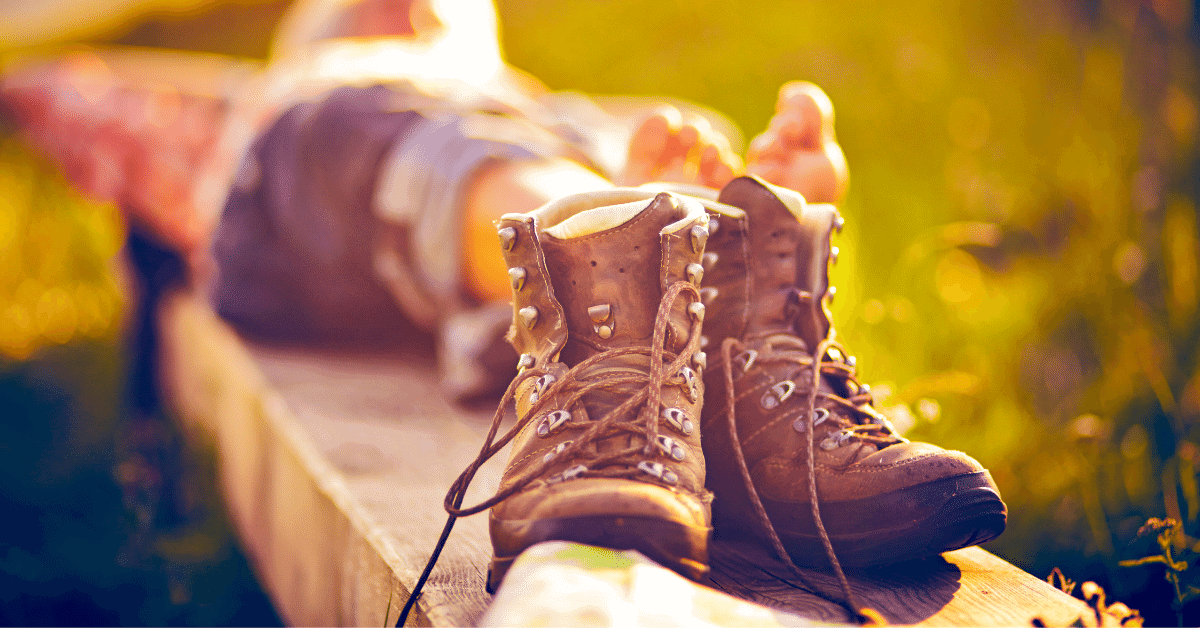
If you’ve already got a pair of hiking boots and they don’t fit well, you can’t perform a miracle to make them fit.
However, if they could fit just a tiny bit better, there are a couple of things you can do to get that perfect fit.
Lace Them Up Properly
You’d be surprised what you can do with your laces to make your boots more comfortable.
There are a few different techniques out there that you can use, depending on what you want to achieve.
You’ve got window lacing, which leaves a gap above the bridge of your foot, relieving pressure. If you’ve got high arches, this will probably be a good one to use.
Then you’ve got the surgeon’s knot. This one can help you out if you’ve got issues with heel slippage.
You intertwine the laces where they cross over on the first row from the top where you tie them. You can also do a double knot by doing 2 rows. What this does is it keeps them nice and tight, and prevents them from loosening while you’re tying them up.
If you begin lacing your boots up one or two hooks up from the bottom, instead of from the very bottom, you’ll be able to relieve some pressure from your toes. If your boots are a little tight around the toe area, this is something you should definitely try out.
Wear The Right Socks
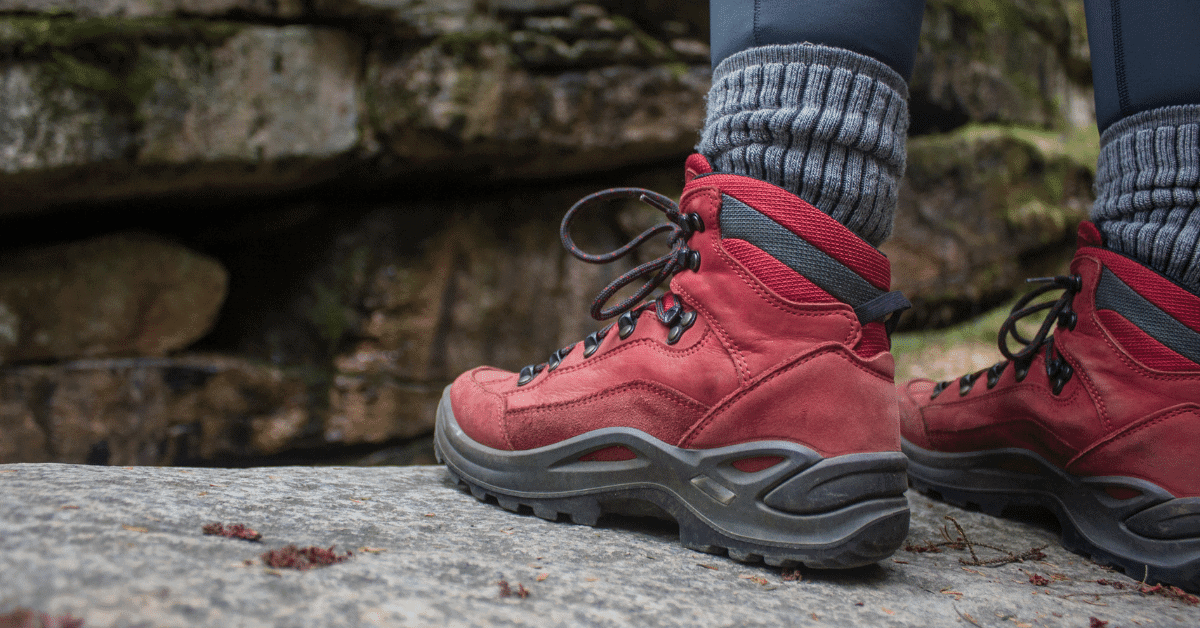
As I already mentioned, the thickness of your socks can make quite a difference.
If your boots are too tight, try wearing thinner socks. If they’re too loose, try a thick pair of socks and see if that helps fill them out.
This obviously won’t make a difference if the size of your boots is way off. But, if they’re just a tad too tight or loose, it could be the perfect solution – and it couldn’t be simpler.
Consider Using Insoles
This is actually something I’d recommend to everybody. A good quality pair of insoles provide excellent arch support, which will make your boots comfier whichever way you look at it.
Make sure you get insoles with an arch height that fits your feet. You can get insoles with an adjustable arch height, which makes it easier to get a perfect fit.
Aside from making your boots comfier, insoles reduce the risk of plantar fasciitis. If you’ve never heard of it, it’s a painful condition that can occur when you hike long distances.
People with high arches or flat feet are at increased risk of suffering from plantar fasciitis. So, if you’ve got either – you should definitely think about getting yourself a pair of insoles.
Make Sure To Break Them In Before You Go Hiking
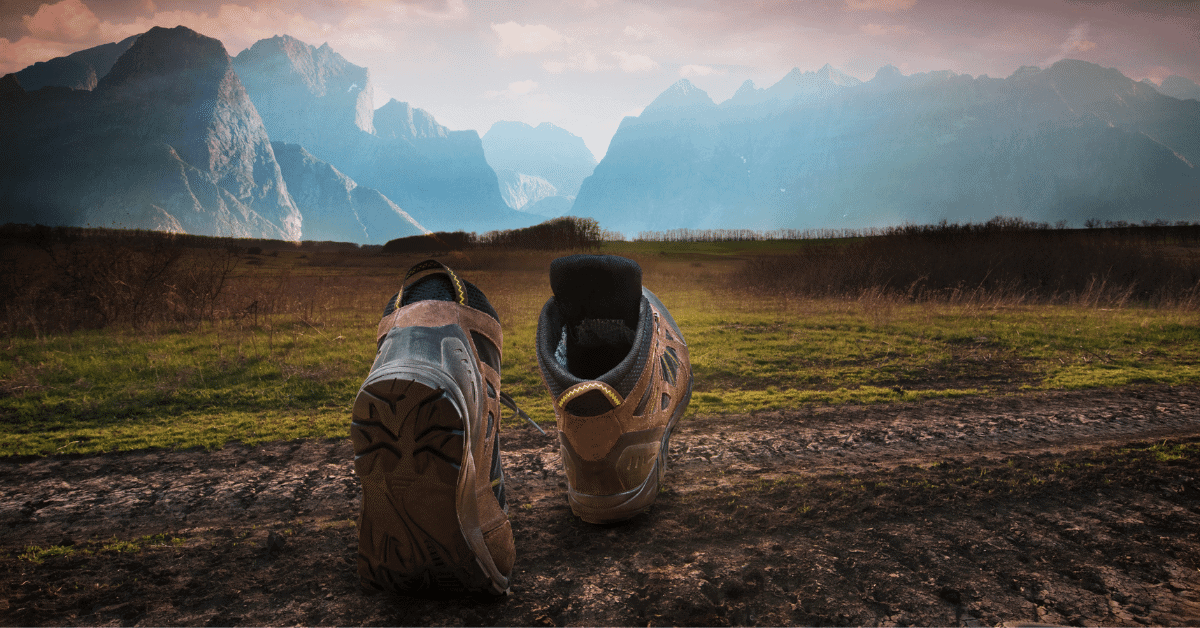
Don’t make the mistake of setting off on a hike in a brand new pair of hiking boots that you’re putting on for the first time.
Don’t get me wrong – you could get lucky. The last pair of hiking boots I bought, Salomon Quest Prime GTXs, felt like I was walking on clouds from the very first time I put them on.
But, this isn’t always the case. And, if you set off on a hike in a pair of boots that need breaking in, and haven’t been broken in – you’re not going to get very far.
So, wear your boots around the house.
Wear them around the neighborhood.
Wear them on short walks whenever you can, so they can get adapted to your feet.
That way, when the time comes to take them on their first hike, they’ll already be broken in and you won’t get any blisters.
What Now?
Keep these tips in mind and you’ll be sure to find a pair of boots that feel like they were made for you.
If you’ve already got a pair of hiking boots and want them to fit better, try out the lacing techniques we talked about, switch up your socks and wear insoles.
Last, but not least, break your boots in before you take them out on a full blown hike!


